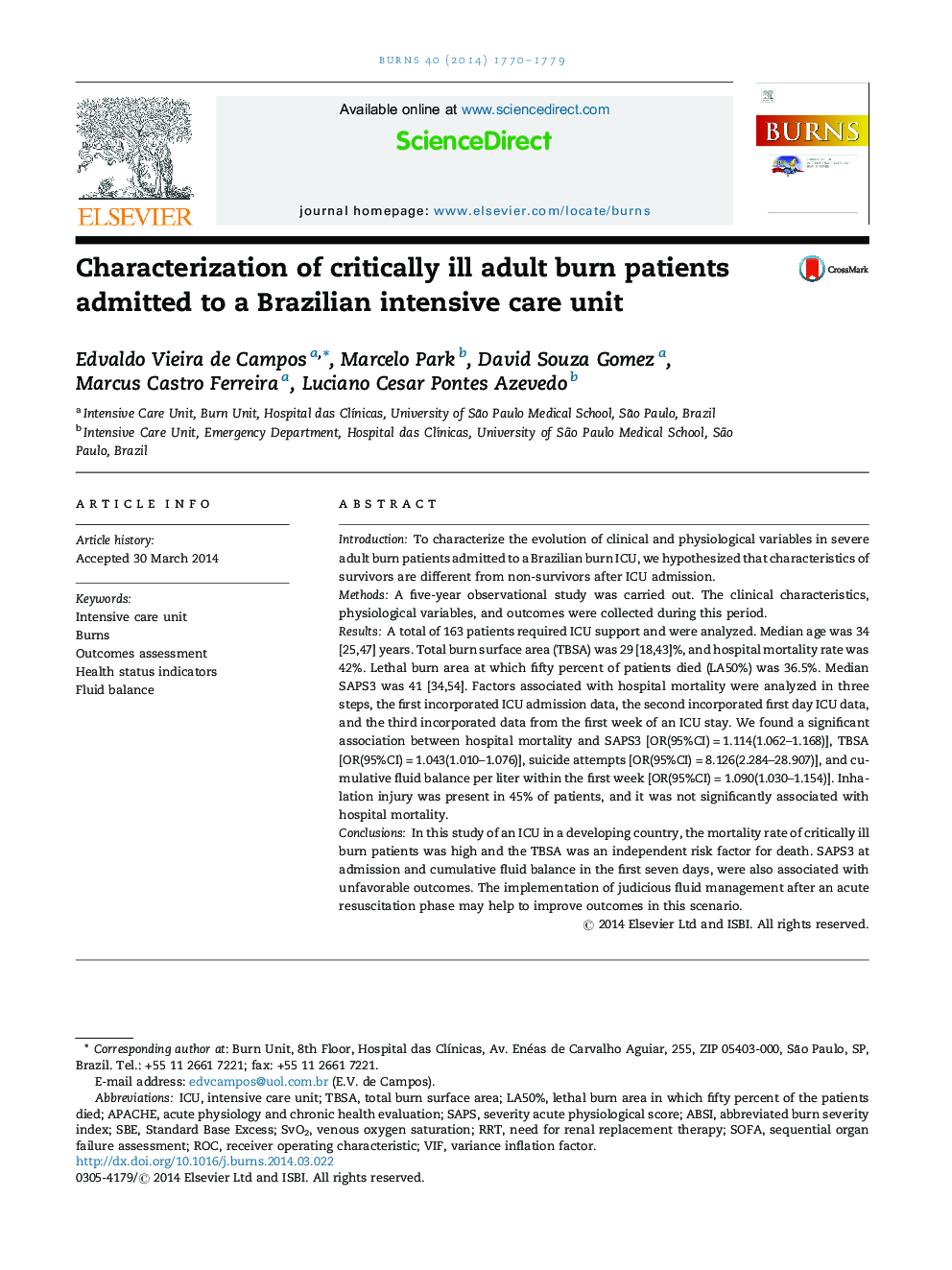| کد مقاله | کد نشریه | سال انتشار | مقاله انگلیسی | نسخه تمام متن |
|---|---|---|---|---|
| 3104411 | 1581730 | 2014 | 10 صفحه PDF | دانلود رایگان |
IntroductionTo characterize the evolution of clinical and physiological variables in severe adult burn patients admitted to a Brazilian burn ICU, we hypothesized that characteristics of survivors are different from non-survivors after ICU admission.MethodsA five-year observational study was carried out. The clinical characteristics, physiological variables, and outcomes were collected during this period.ResultsA total of 163 patients required ICU support and were analyzed. Median age was 34 [25,47] years. Total burn surface area (TBSA) was 29 [18,43]%, and hospital mortality rate was 42%. Lethal burn area at which fifty percent of patients died (LA50%) was 36.5%. Median SAPS3 was 41 [34,54]. Factors associated with hospital mortality were analyzed in three steps, the first incorporated ICU admission data, the second incorporated first day ICU data, and the third incorporated data from the first week of an ICU stay. We found a significant association between hospital mortality and SAPS3 [OR(95%CI) = 1.114(1.062–1.168)], TBSA [OR(95%CI) = 1.043(1.010–1.076)], suicide attempts [OR(95%CI) = 8.126(2.284–28.907)], and cumulative fluid balance per liter within the first week [OR(95%CI) = 1.090(1.030–1.154)]. Inhalation injury was present in 45% of patients, and it was not significantly associated with hospital mortality.ConclusionsIn this study of an ICU in a developing country, the mortality rate of critically ill burn patients was high and the TBSA was an independent risk factor for death. SAPS3 at admission and cumulative fluid balance in the first seven days, were also associated with unfavorable outcomes. The implementation of judicious fluid management after an acute resuscitation phase may help to improve outcomes in this scenario.
Journal: Burns - Volume 40, Issue 8, December 2014, Pages 1770–1779
